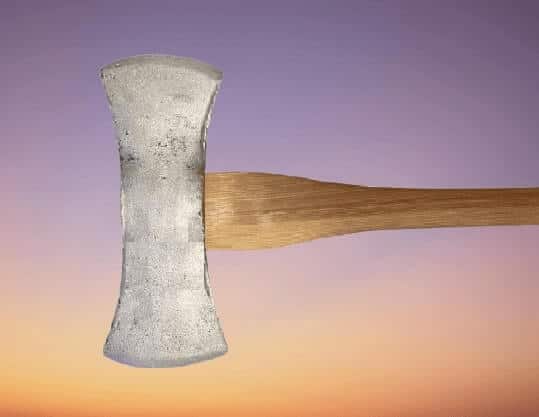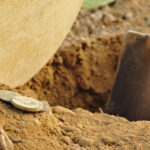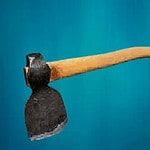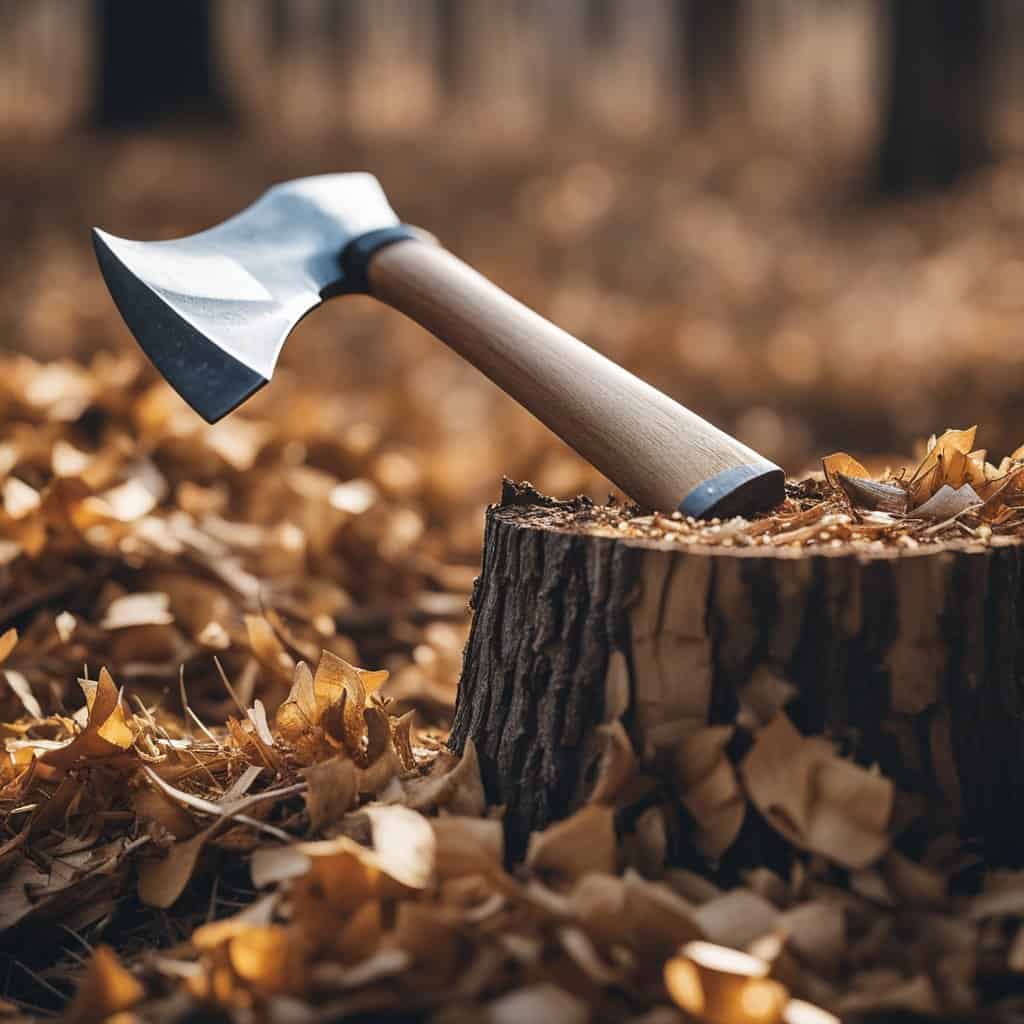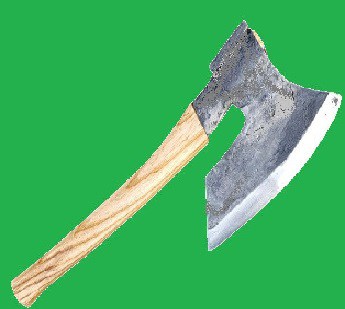The swamping axe is a unique design utilized in forestry work, primarily logging. It is a variation of the double-bit axe, and the swamper was the guy who did the limbing after the feller had the tree on the ground. The swamping axe is a versatile tool commonly used in forestry for felling trees, limbing, and bucking.
Table of Contents
Design Features Of A Swamping Axe
The swamping axe was so named as swampers, who were the clean up crew when logging, utilized the axe to remove branches and limbs from fallen trees.
The swamping axe is a double-bit axe with two identical heads on opposite ends of the haft. The blade of a swamping axe is typically wider than a traditional axe, which allows for more efficient chopping and cutting. The heads are generally high carbon steel and tempered to ensure durability and strength. The toe and heel of the axe heads are symmetrical, allowing the user to use either side of the axe for cutting.
Swamping axes are particularly useful for clearing trails, cutting through dense vegetation, limbing, felling, and chopping. The haft of the swamping axe is typically made from hardwood, such as hickory or ash. The haft is long and straight, around 30 to 36 inches long. The haft is also shaped to provide a comfortable grip for the user, with a slight curve towards the end to prevent slipping.
Like other axes such as the Canadian Axe which you can read more about in our guide The Canadian Axe, swamping axes come in various sizes and styles and are made from multiple materials, including wood, steel, and fibreglass.
The swamping axe is popular among forestry workers because its long handle allows for a mighty swing, making it easier to cut through thick branches and tree trunks and the blade of the axe is usually made from high-quality steel to withstand heavy use and resist corrosion. The cutting edge of the swamping axe is sharp and designed to be versatile, and the edge is typically ground to an angle of around 25 degrees, which is ideal for most cutting tasks.
Uses Of A Swamping Axe
A swamping axe though used primarily for limbing, is a versatile tool for various tasks in forestry, including:
- Limbing – Limbing removes branches from a fallen tree, and the swamping axe’s sharp blade and long handle make it easy to reach and cut branches on the tree.
- Felling – Felling is, in essence, cutting down a tree. While a swamping axe is not the ideal tool for felling large trees, it can be used to fell smaller trees. The sharp blade of the axe can cut through the tree’s trunk quickly, making the felling process faster and more efficient.
- Chopping – Chopping is the process of cutting wood into smaller pieces. The sharp blade of the axe can cut through the wood easily, making the process of chopping wood faster and more efficient.
- Cutting – Cutting is the process of cutting wood into specific shapes and sizes. The sharp blade of the axe can cut through the wood easily, making the process of cutting wood faster and more efficient.
- Bucking – Bucking is the process of cutting a felled tree into logs. The sharp blade of the axe can cut through the tree’s trunk quickly, making the process of bucking a tree faster and more efficient.
- Splitting – Splitting is the process of splitting wood into smaller pieces. A swamping axes sharp blade of the axe can cut through the wood easily, making the process of splitting wood faster and more efficient.
How To Choose A Swamping Axe
When choosing a swamping axe, consider the price, brand, reproductions, axe conditions, and edge length.
- Price – Swamping axes come in a wide range of prices, from budget-friendly options to high-end models. Consider your budget and choose an axe that fits within it. Remember that a higher price tag sometimes means better quality.
- Brand -There are many reputable brands that make swamping axes, including Gransfors Bruks, Hults Bruk, and Wetterlings.
- Reproductions – Some swamping axes are reproductions of vintage or antique models. While these can be an excellent choice for collectors or enthusiasts, they may not be as durable or functional as modern axes.
- Condition – When buying a swamping axe, consider its condition. Look for signs of wear, rust, or damage. If buying online, ask the seller for detailed photos and descriptions of the axe’s condition.
- Edge Length – A longer edge can be more efficient for cutting through thick brush and vegetation but more challenging to maneuver in tight spaces. Choose an edge length that fits your needs and preferences.
Maintaining A Swamping Axe
Keeping a sharp cutting edge on your swamping axe is crucial to its effectiveness and longevity. To sharpen your axe, you will need a sharpening stone or file.
Cleaning your axe after using it is paramount to prevent rust and damage to the blade. Use a slightly wet cloth to wipe down the entire axe, paying particular attention to the blade and handle. For stubborn dirt or debris, use a soft-bristled brush to scrub the affected areas gently. Try to avoid harsh chemicals or abrasive materials that could damage the axe.
Once the axe is clean and wiped down, store your axe in a dry, safe place away from direct sunlight and moisture. A damp or humid environment can lead to rust and damage to the blade, so if possible, store your axe in a protective case or cover to prevent scratches and other damage.
With proper sharpening, cleaning, and storage, your swamping axe can last many years and provide reliable service when needed.
Final Thoughts
The swamping axe is a versatile and durable tool that can perform multiple tasks, such as chopping, splitting, and carving. Its sharp blade allows for precise cuts, while the swamping axes’ weight and balance make it easy to control.

